Animals
Artwork Khrushchev Probably Would Not Have Liked 48
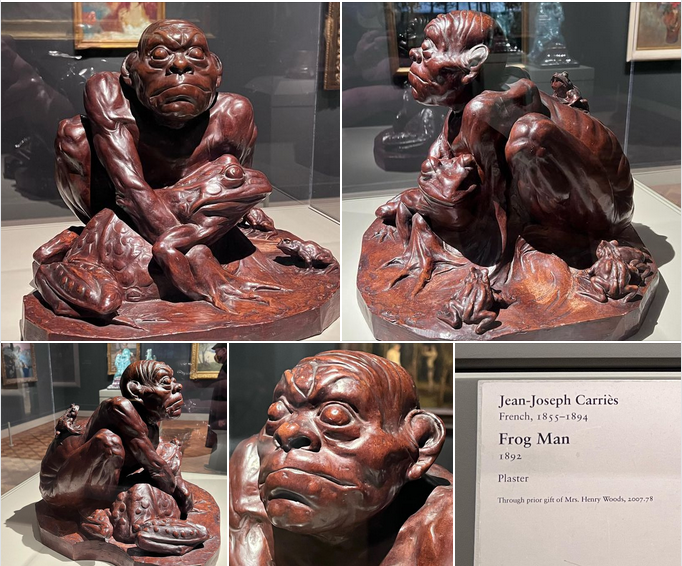
His Wikipedia page.
Posted By: Paul - Thu Jan 26, 2023 -
Comments (0)
Category: Animals, Art, Cryptozoology, Nineteenth Century
Glock Stallions
Glock is well-known as a gun manufacturer. What's less well known is that they also sell horse semen. link: Glock Stallions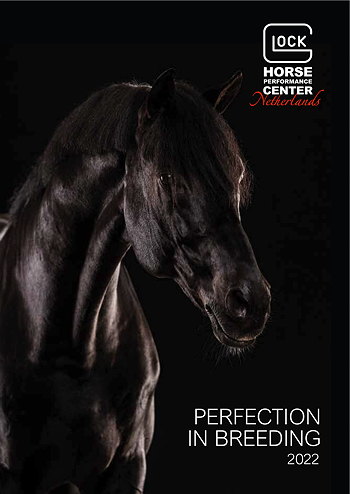
Posted By: Alex - Fri Dec 09, 2022 -
Comments (7)
Category: Animals, Weapons
Poronkusema
As explained by Ziya Tong in The Reality Bubble: how science reveals the hidden truths that shape our world (2019):I found a Finnish-language book titled Poronkusema, but the google-translated blurb is somewhat incomprehensible and doesn't mention anything about urinating reindeers.

Posted By: Alex - Wed Dec 07, 2022 -
Comments (4)
Category: Animals, Instruments and Measuring Devices, Body Fluids
Wingless Chickens
Because he disliked "gnawing on stringy chicken wings," Peter Baumann bred wingless chickens. This was back in the 1940s. Evidently his wingless chickens failed to interest the chicken industry. I haven't been able to find out what became of his flock.To illustrate the helpless quality of these wingless birds, photographer Francis Miller dropped one from six feet to show how it failed to fly, as opposed to a winged chicken that glided downwards.
Images from Life - July 18, 1949:
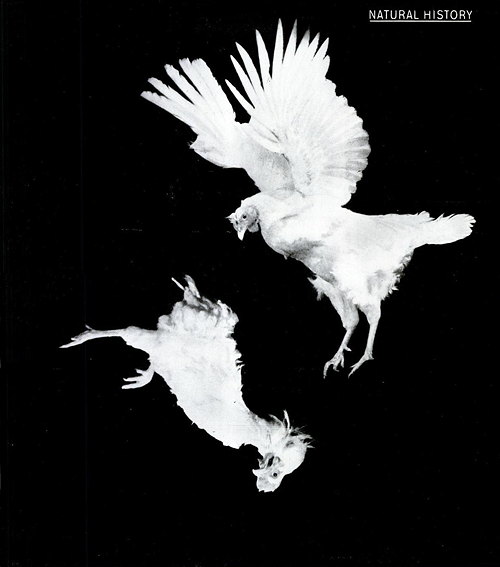
"Wingless chicken (below) plummets helplessly downward when dropped from 6-foot height, while normal bird settles gently with wings spread"

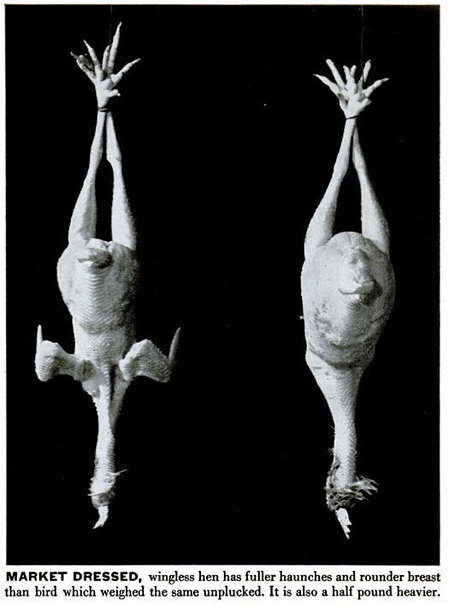

Posted By: Alex - Sun Nov 13, 2022 -
Comments (1)
Category: Animals, Farming, 1940s
Playing Music With Animals
Here is one track from this album (tracklist below). If you wish to listen to the rest, visit the Internet Archive and choose the Spotify option.The human's Wikipedia page.

Posted By: Paul - Wed Oct 26, 2022 -
Comments (0)
Category: Animals, Music, 1980s, Cacophony, Dissonance, White Noise and Other Sonic Assaults
Goat-mobile
Not only bucks, but bleats! The inventor's predilection for a goat figure definitely NOT Satanic!Full patent here.


Posted By: Paul - Sat Oct 22, 2022 -
Comments (3)
Category: Animals, Bicycles and Other Human-powered Vehicles, Inventions, Patents, Toys, Nineteenth Century
GI Joe Trouble Shooter
The video is a hoot, what with a deranged bird and the famous "Kung Fu Grip." But I am also intrigued by the descriptions of the control panel buttons. Did the set come with labels so you could change the button names? I suspect not. So..."Washington" is a given. Stay in touch with HQ. "Code X7" is suitably mysterious. But "Jungle" and "Arctic" are ultra-generic, whereas "Burma" and "Tibet" are ultra-specific. Why those two countries anyhow? Commie (Cobra) hotspots?A page devoted to the toy.


Posted By: Paul - Sat Sep 24, 2022 -
Comments (0)
Category: Animals, Military, Motor Vehicles, Toys, 1970s
Dead Bird Decoy Holder
When a wooden or plastic decoy just won't do!Full patent here.
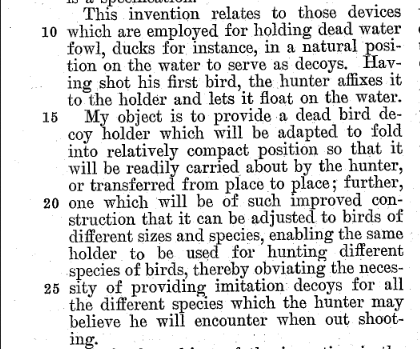

Posted By: Paul - Mon Sep 12, 2022 -
Comments (0)
Category: Animals, Hunting, Trapping and Other Wilderness Activities, Imitations, Forgeries, Rip-offs and Faux, Patents, 1910s
Bees told of Queen Elizabeth’s Death
Royal housekeeper John Chapple has carried out the duty of telling the bees kept at Buckingham Palace and Clarence House that Queen Elizabeth has died, and that King Charles is their new master."You knock on each hive and say, 'The mistress is dead, but don't you go. Your master will be a good master to you.'"
This was in accordance with the ancient British custom of "telling the bees," which we described in a post back in 2012.
More info: geo.tv
Posted By: Alex - Sun Sep 11, 2022 -
Comments (2)
Category: Animals, Customs, Death, Royalty, Superstition
5000 Hedgehogs Needed
I do not believe this mystery has ever been definitively solved.Source of first clipping: The Guardian (London, Greater London, England) 07 Oct 1935, Mon Page 7
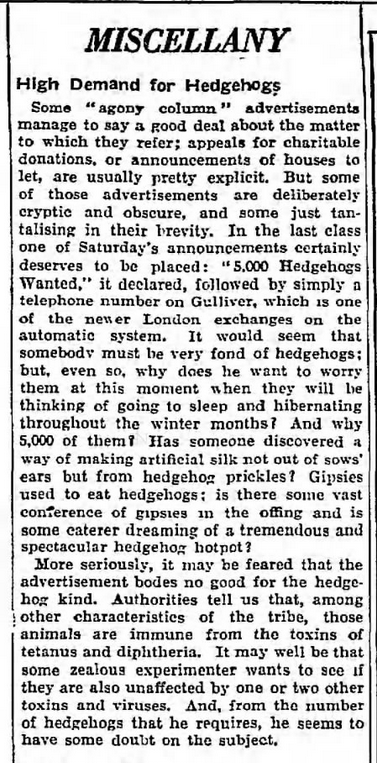
Source of second clipping: The Guardian (London, Greater London, England) 09 Oct 1935, Wed Page 9
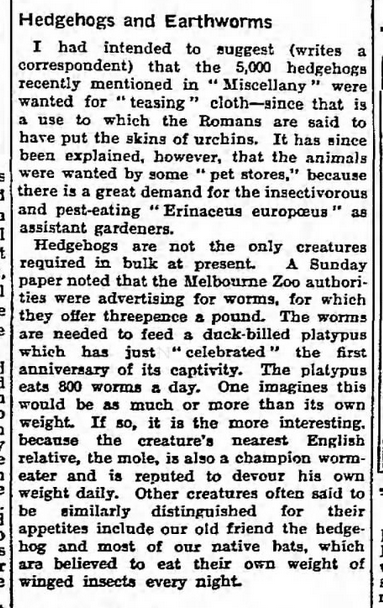
Source of third clipping: Western Morning News (Plymouth, Devon, England) 05 Jan 1937, Tue Page 4

Posted By: Paul - Fri Sep 09, 2022 -
Comments (1)
Category: Animals, Unsolved Mysteries, 1930s, United Kingdom

| Who We Are |
|---|
| Alex Boese Alex is the creator and curator of the Museum of Hoaxes. He's also the author of various weird, non-fiction, science-themed books such as Elephants on Acid and Psychedelic Apes. Paul Di Filippo Paul has been paid to put weird ideas into fictional form for over thirty years, in his career as a noted science fiction writer. He has recently begun blogging on many curious topics with three fellow writers at The Inferior 4+1. Contact Us |




